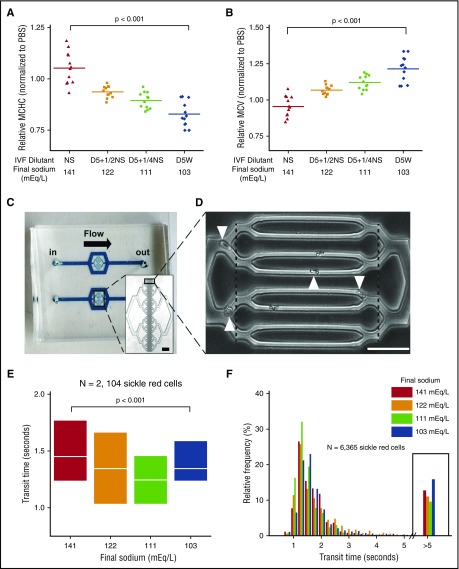Figure 1.
Fluid admixtures with various tonicities alter sRBC biomechanics and transit times in a microfluidic model of the capillary bed. (A-B) Using commonly used IVFs, increased extracellular fluid tonicity increases cytoplasmic viscosity (MCHC) and hypotonic fluids increase size (MCV) of sRBCs, as demonstrated in results from N = 3 patient blood samples. (C) The capillary-sized microdevice measures 1.5 cm from inlet to outlet. (Inset) 4× view; scale bar, 100µm. (D) The smallest channels (8 are shown in the figure) are ∼6 µm wide × ∼13 µm tall. Transit times of sRBCs from 4 patient blood samples were measured as the time required for each cell to traverse the distance between the dashed lines. Occlusion and transit time data were analyzed from 28 microchannels for each experiment (20× view; scale bar, 50µm; white arrowheads are transiting sRBCs). (E) Transit times of sRBCs that traversed unobstructed microchannels were measured after exposure to the different IVF admixtures. White lines and boxes represent median values and 25th and 75th percentiles, respectively. (F) Relative frequency plots show transit times of all sRBCs from the 4 patient blood samples in the different conditions, including stuck sRBCs that have very prolonged transit times, defined as more than 5 seconds. Admixtures with the highest and lowest tonicities were associated with an increased frequency of stuck sRBCs and other poorly deformable cells with very prolonged transit times (ie, >5 s; black boxed data) that caused transient obstruction before finally traversing microchannels.

